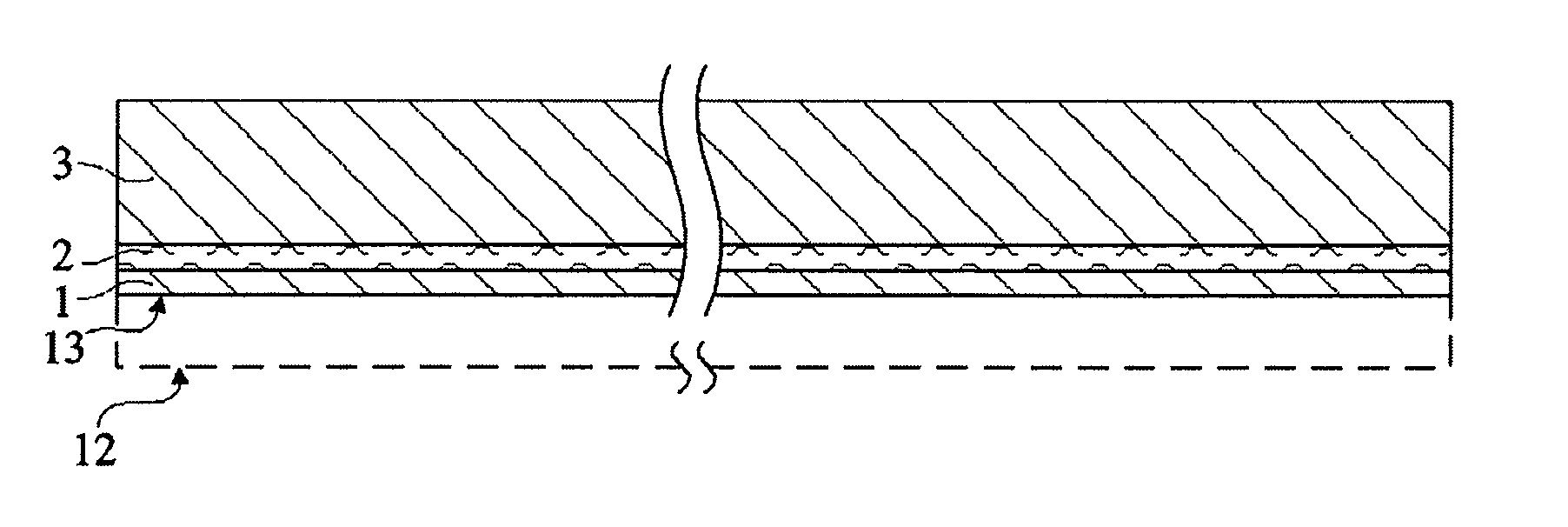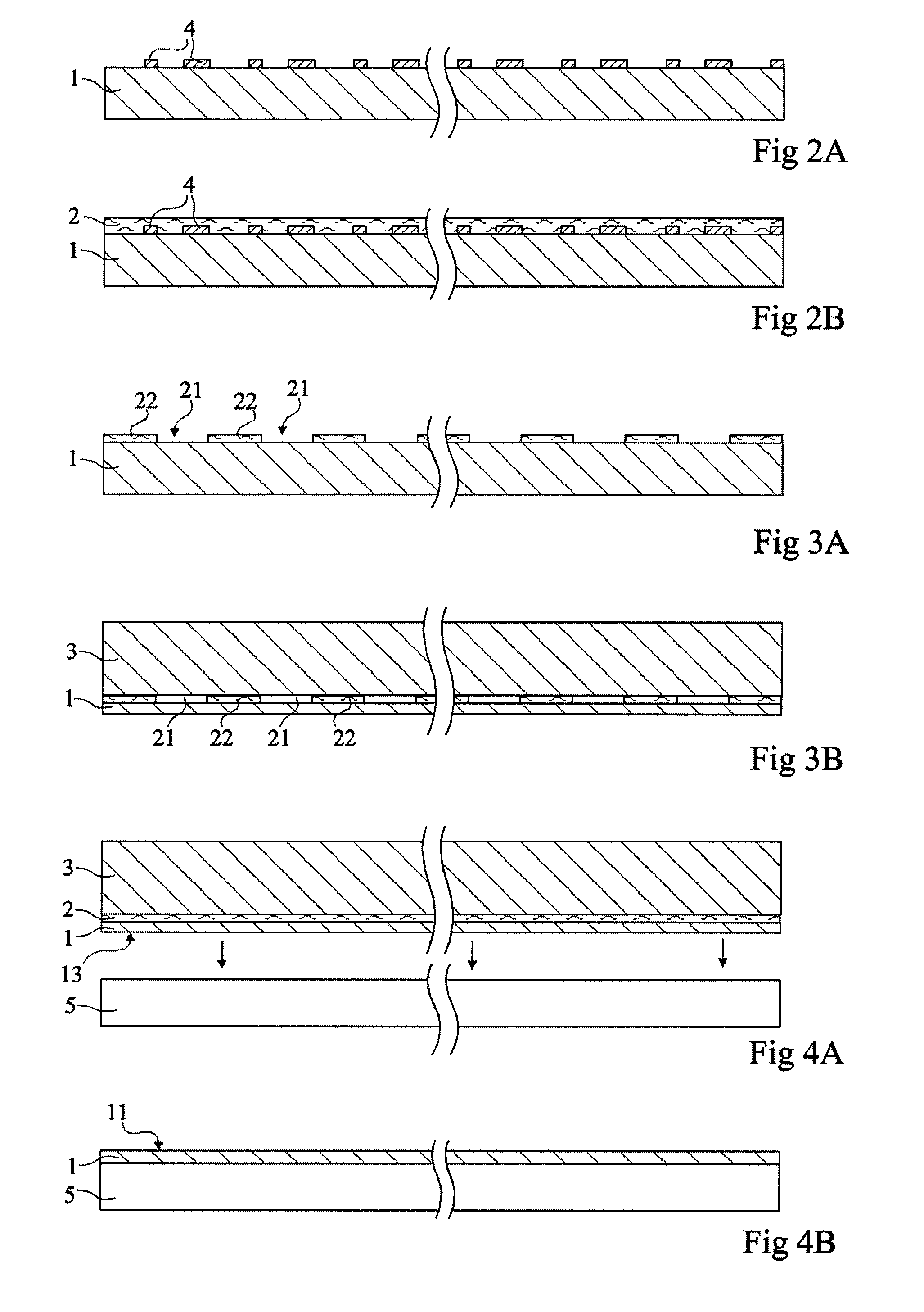Semiconductor wafer thinning
a technology of semiconductor wafers and thinning strips, applied in the field of microelectronics, can solve the problems of difficult processing, thinning of semiconductor wafers, and risks of damaging the integrated circuit supported by the semiconductor wafer, and achieve the effect of avoiding any risk of stress or contamination
- Summary
- Abstract
- Description
- Claims
- Application Information
AI Technical Summary
Benefits of technology
Problems solved by technology
Method used
Image
Examples
Embodiment Construction
[0048] The same elements have been designated the same reference numerals in the different drawings which have been drawn out of scale. For clarity, only those steps and elements which are necessary to the understanding of the present invention have been shown in the drawings and will be described hereafter. In particular, the steps of integrated circuit manufacturing on the semiconductor wafer have not been detailed, the present invention being compatible with any conventional electronic circuit manufacturing method. Similarly, the actual thinning of a semiconductor wafer supported by a substrate according to the present invention has not been detailed, the present invention being here again compatible with all conventional thinning techniques.
[0049] According to a preferred embodiment of the present invention, a first semiconductor wafer to be thinned down from a first surface is placed by its first surface on a substrate formed of a second wafer, preferably of same nature, with ...
PUM
| Property | Measurement | Unit |
|---|---|---|
| thickness | aaaaa | aaaaa |
| thickness | aaaaa | aaaaa |
| thickness | aaaaa | aaaaa |
Abstract
Description
Claims
Application Information
 Login to View More
Login to View More - R&D
- Intellectual Property
- Life Sciences
- Materials
- Tech Scout
- Unparalleled Data Quality
- Higher Quality Content
- 60% Fewer Hallucinations
Browse by: Latest US Patents, China's latest patents, Technical Efficacy Thesaurus, Application Domain, Technology Topic, Popular Technical Reports.
© 2025 PatSnap. All rights reserved.Legal|Privacy policy|Modern Slavery Act Transparency Statement|Sitemap|About US| Contact US: help@patsnap.com



